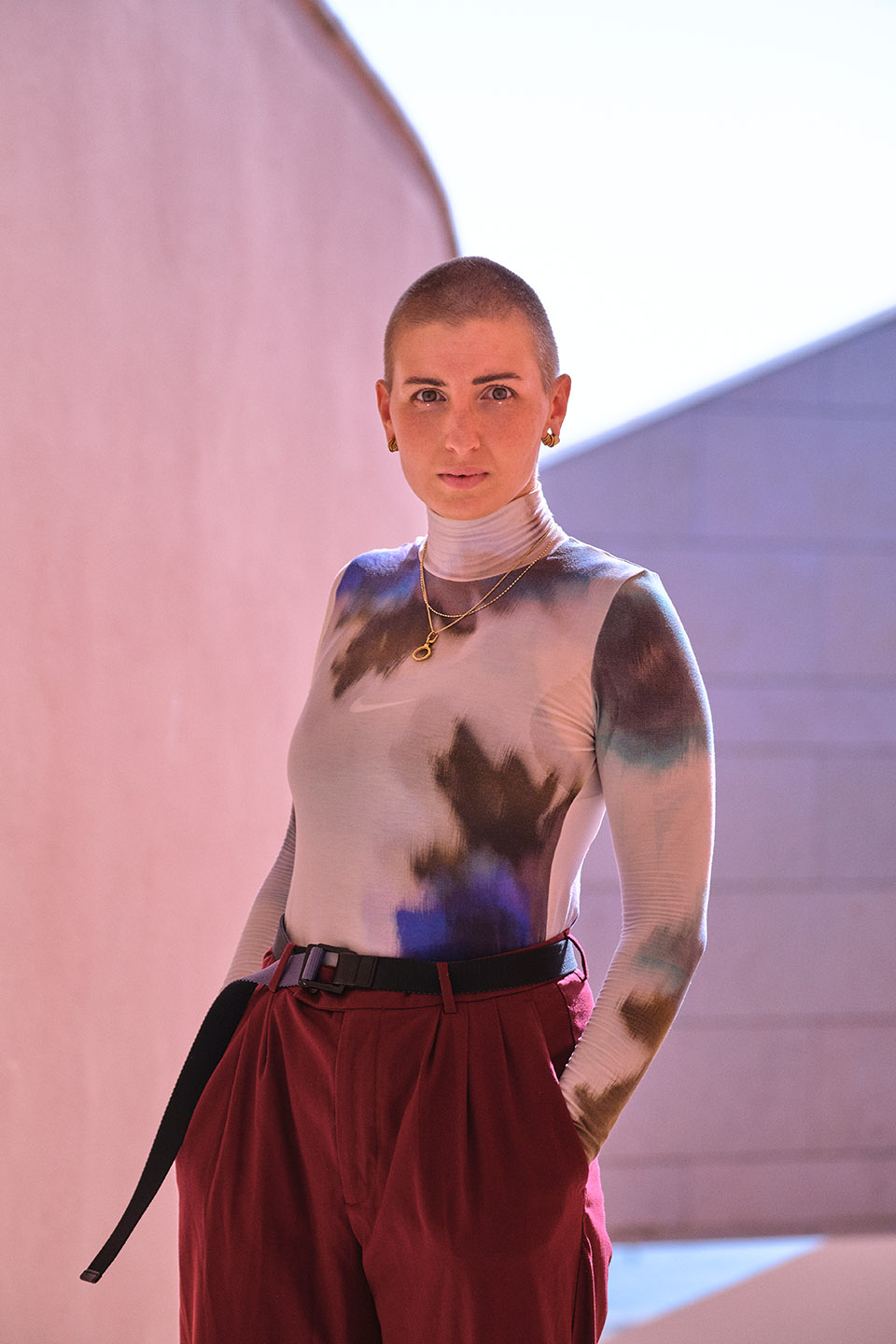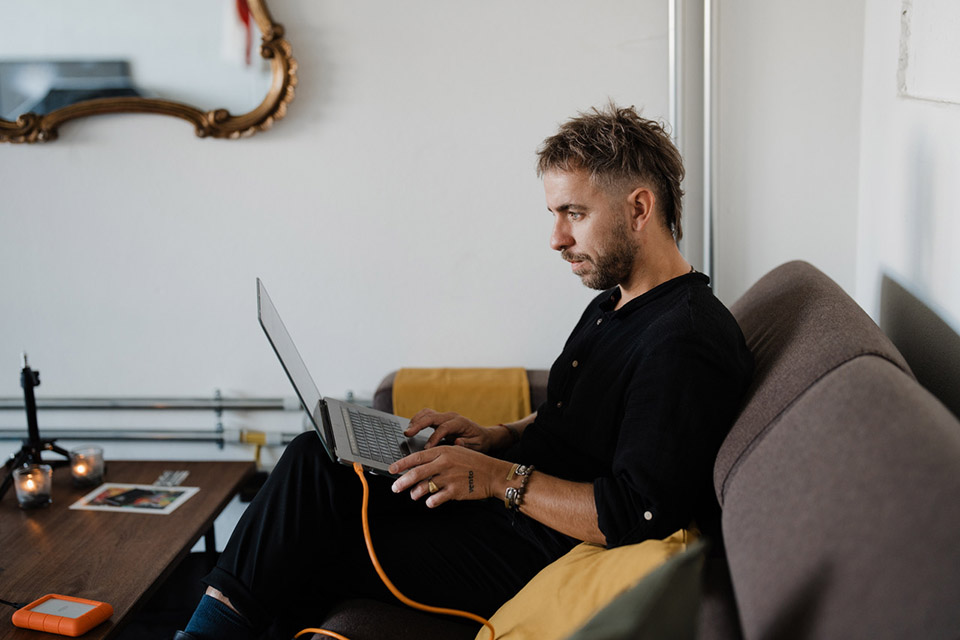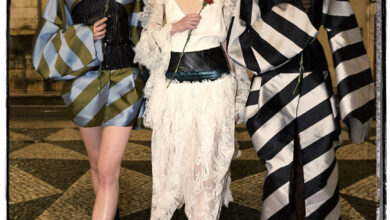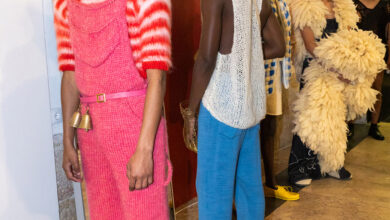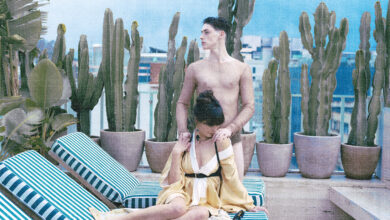In an interview with ZOOT, Lisbon based longboard dancer Giu shares insights on their profession, discusses the works of neurodivergency, their path to self-discovery, and community inclusion. Whilst they are highlighting the transformative impact of dance as a form of personal expression, we learn more about the role that comes with fostering a supportive community.
Photos Daniel Fragoso aka Black Magic Tea
Featuring Giu Alfeo
Words and interview Kelly Bernardo
Giu Alfeo was born and grew up in Germany in the “Ruhrgebiet” north of Cologne. With a background of design, mostly focused on interaction design, the professional longboarder is now based in Lisbon since many years. In a candid interview with ZOOT, Giu delves into the realms of neurodivergency, self-discovery, and the expressive art of longboard dancing. Giu opens up about their journey of self-exploration, from navigating potential neurodivergent traits to discovering the therapeutic nature of dance as a form of personal expression. Sharing insights into the fusion of various dance styles with longboard routines, Giu emphasizes the importance of community, inclusivity, and the transformative impact of longboard dancing as both a sport and as an art form. Through their experiences, Giu embodies the essence of creative expression and the continual pursuit of self-growth in a multifaceted world.
Photographer Daniel Fragoso from Luxembourg, with Portuguese origins, captured Giu Alfeo’s essence at Fundação Champalimaud in Lisbon, adjacent to the Tagus River. Positioned near the water’s edge, the lens of Daniel’s camera delved into the intricacies of Giu´s artistry movement as they executed graceful maneuvers against the urban backdrop the building’s unique architectual structure.
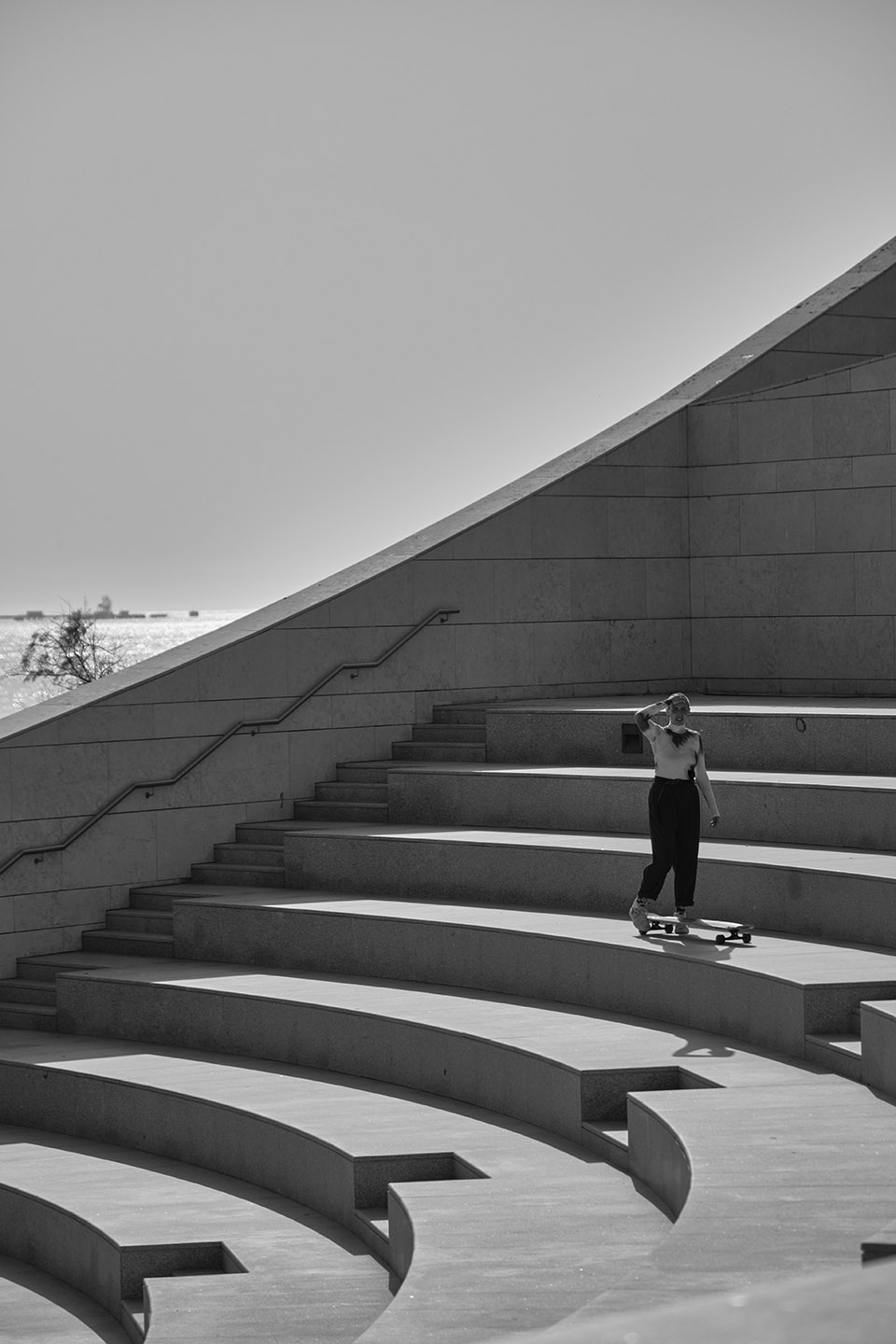

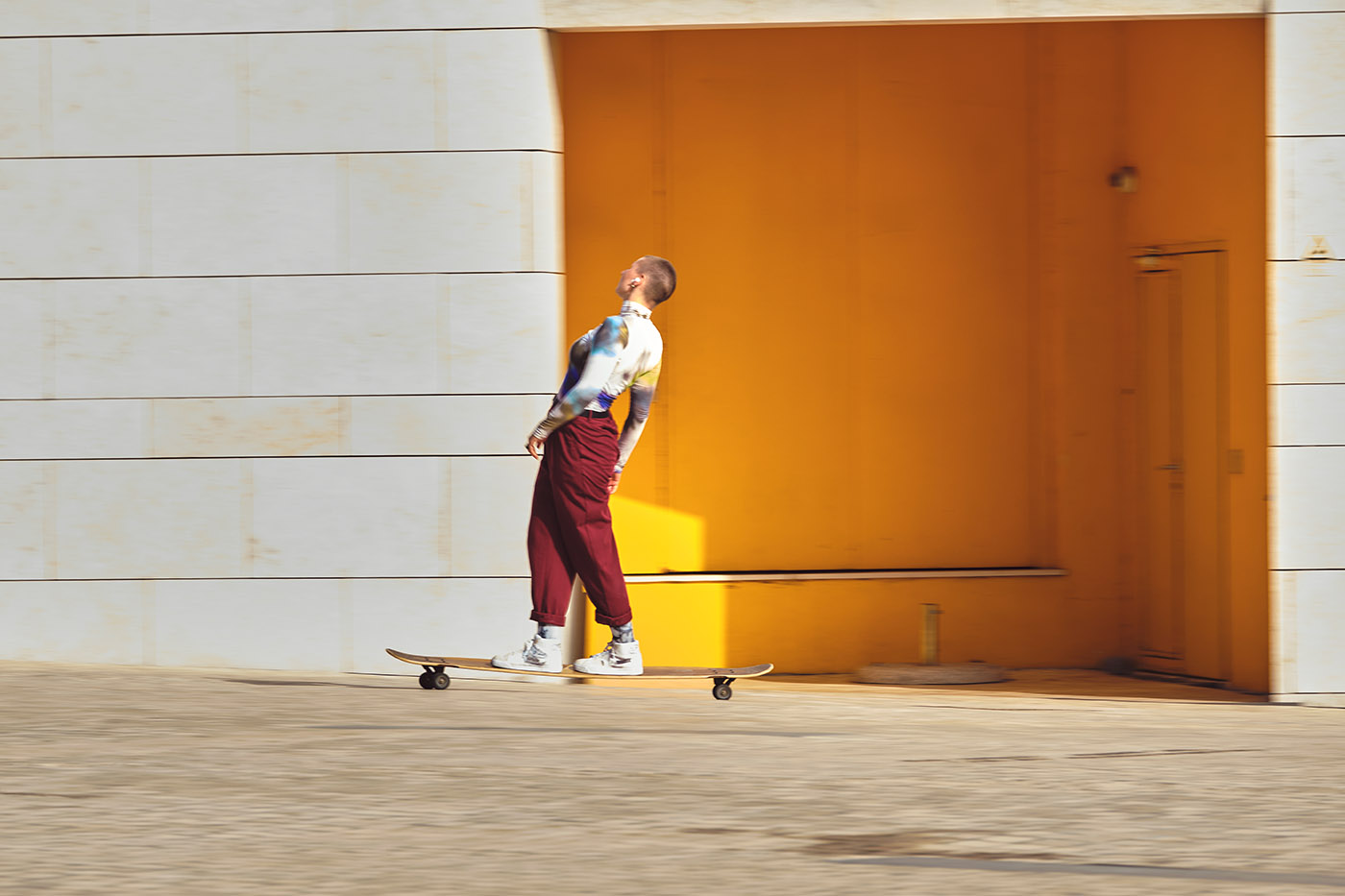
The thing about mental health is that now I know the spot to arrive in this journey and understand that you’re never finished learning. There’s always more! There are always things to learn about yourself and comprehend how to deal with it. Circumstances change! It’s a never-ending journey.
— Giu Alfeo
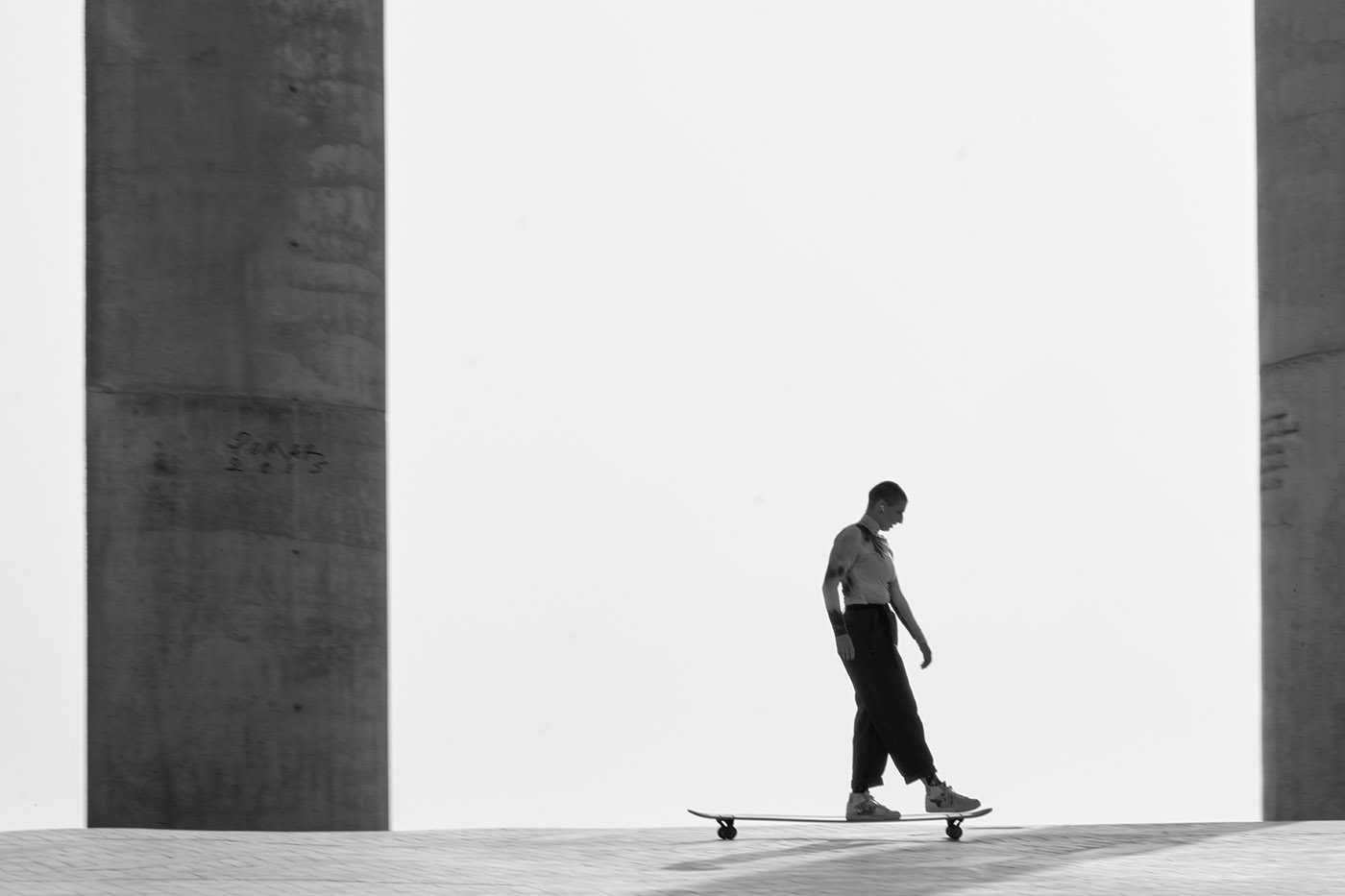
We meet with Giu on skype, below are excerpts from ZOOT’s conversation with Giu.
ZOOT: First off, would you like to maybe introduce yourself?
Giu Alfeo: Sure! I am Giu, my pronouns are he/they and I am a professional longboard based in Lisbon. Originally, I was born in Germany.
About ADHD: My experience with ADHD and mental health has been a journey. I’m not officially diagnosed and at the moment I’m doubting that I have ADHD. I think it might be CPTSD. However: I experience a lot of the typical symptoms of ADHD, even though it might have a different source. The whole point of this is also to talk about mental health and being neurodivergent in a world that expects us to function in a very specific way that very specific types of brains can work with. With this comes with a lot of struggling and a lot of not fitting in because if you don’t fit in like people [they] have other expectations. (…) I have just started therapy recently so it’s like a lot of still exploration on what it is that is going on.
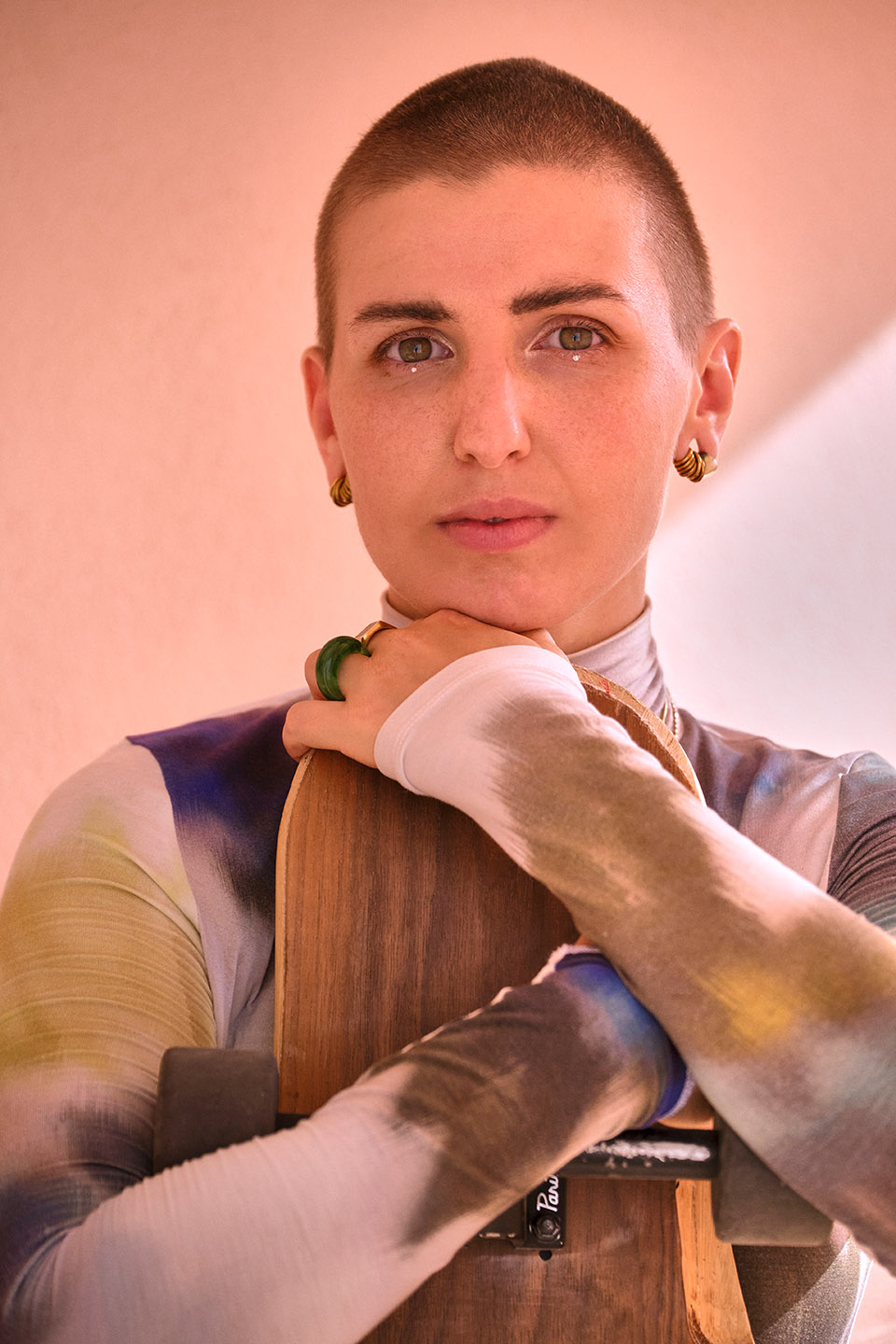
ZOOT: I think it’s very interesting how you openly express yourself and talk about being neurodivergent. These days, it’s super important to have people like you out there spreading this positivity and awareness. I wanted to ask you when and how did you actually start to suspect these neurodivergences? When and how did you find your true identity?
Giu: This actually happened because of my flatmate. One day we’re joking in the kitchen, and she was saying something (or I was saying something) about brains. Something like: “Everyone has a broken brain!” And I thought that my experience was normal and that everyone’s like that, but then my flat mate said that there are people who have a normal brain. [laughs] This made me realize like “oh”. All because she is also suspecting that she has ADHD. (…) It took me some time and eventually I got into a rabbit hole, really researching the symptoms and the typical experience. It was very clear that a lot of the symptoms that I have are very much matching with ADHD. There are also some that match (not that much, though) with Autism. I’ve been on this journey of diving and digging deeper into my childhood for a while and realizing that there are even more details at play…
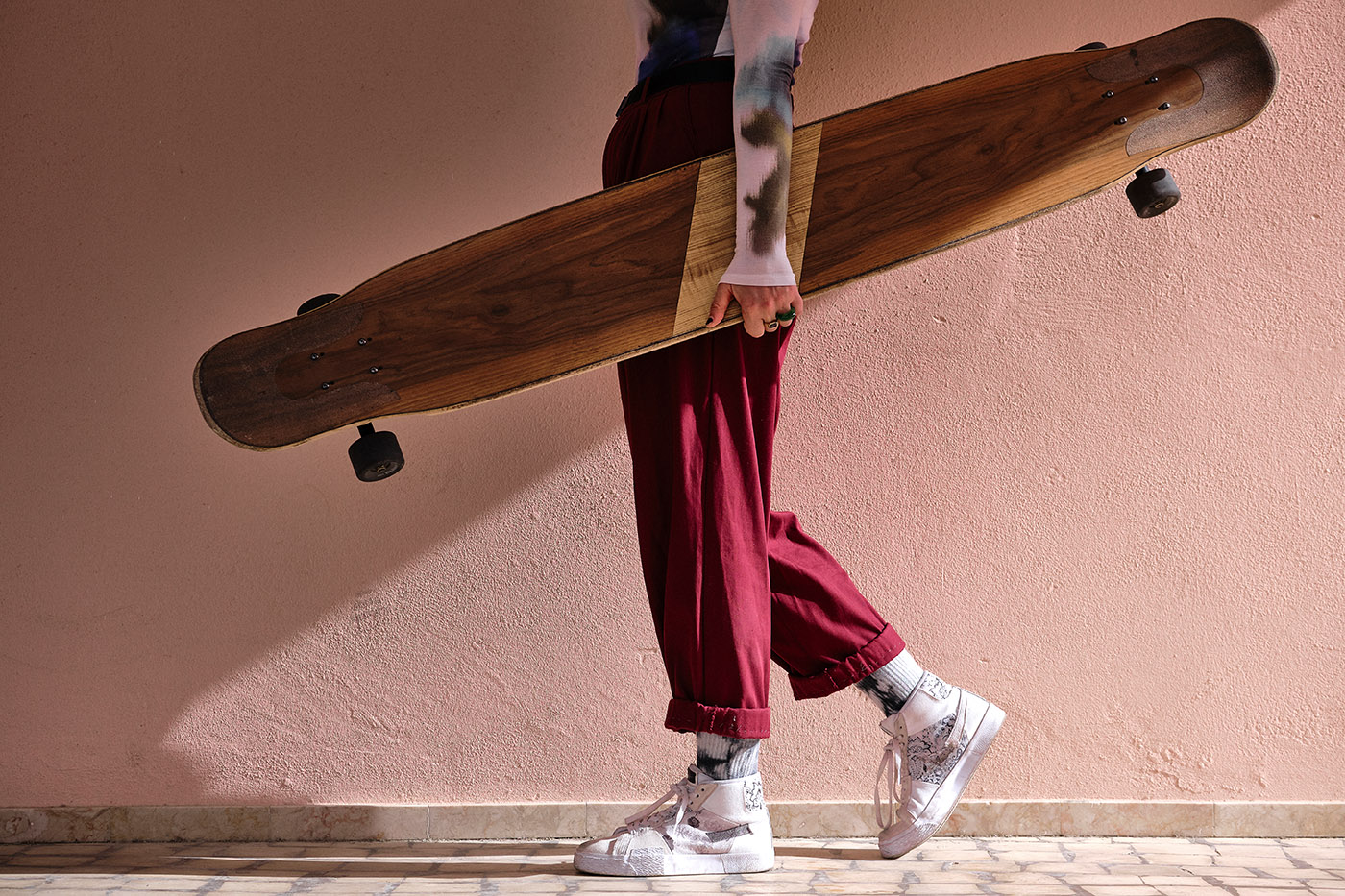
ZOOT: Oh yeah, definitely. So, did longboard help you deal with these kinds of weight? Was there an initial motivation for the sport, did you do it before? How did you start?
Giu: In the context of neurodivergency, longboard dancing has been a supportive outlet for me.
I was never fitting into any norm or expectations. Of course, I have to conform… but at the same time I was so non-conforming that eventually it made things easier for me to just breakout of what’s normal. Even though longboard dancing is something that is very creative, there is a certain way or certain elements and ways of how you do longboard dancing.
From very early on I had this idea already of wanting to do something else other than what I typically see with longboard dancing. I’ve been skating for 10 years now, which means I’m at this place where the image that I had back then began to shape and becoming more concrete.
People understand it more, I have more vocabulary and finding vocabulary makes something real… it’s incredible how powerful words are. Figuring out in terms of movement and physicality has been quite the ride.
What I want to do and still research on is the part of finding the right words to communicate and explain the concepts that I have. I think this is something that will help, eventually! Also, this is where the Longboard Dancing Fusion Lab (that I recently started), is going to help me a lot. It helps create a sort of communication that is making things concrete and showing it in a verbal way- like a language, but also visually a language.
It goes to show also other people who are in this fusion of bringing fun from breakdance, hip-hop or kpop! I just saw someone for the first time dancing kpop and tried this out on the longboard and I’m excited to show this and not be the only one that’s visible or that does most work in the field.
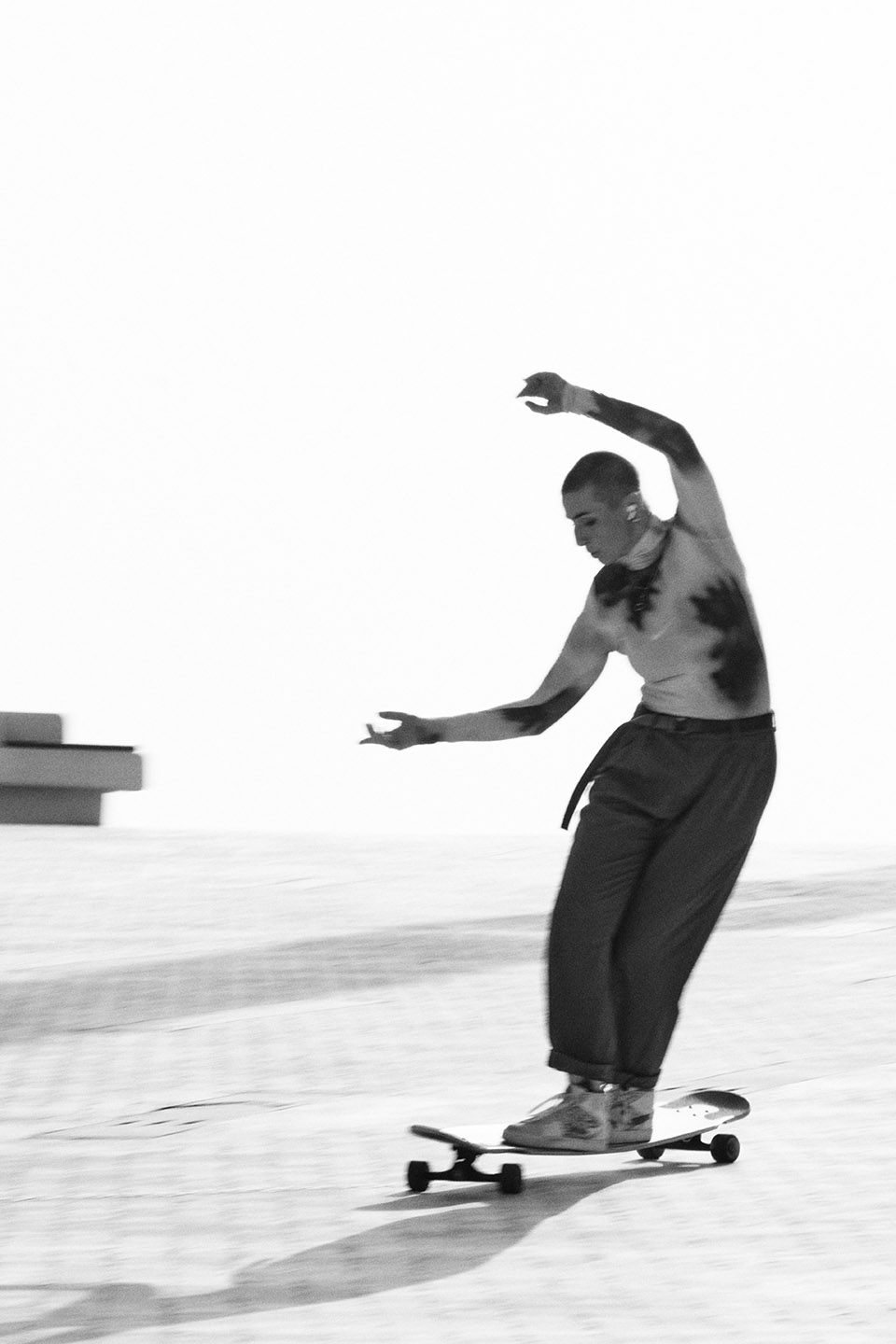
ZOOT: How do you actually choose the right music for your dance routines? Is there any factor that may sway your decisions?
Giu: Yes! Back in the day, it’s been mostly my own emotional connection. Often, for dancing, you want something that gives you material because as a dancer you reinterpret the music and the feeling of what the artist creates. You dabble with the reinterpretation of a feeling, but also learn more techniques about the music and the background and history of music for instance.
You have many street styles that were created parallel to the music. Funk music and locking, then disco and whacking and, later, you have house (that is the evolution from disco) and house dance, etc. I like to really dig deep and understand more of the culture, the background and what it is about. I dance multiple styles, although I’m definitely heavily influenced from a lot of street styles, my foundations are contemporary which also takes a lot of inspiration from other dance styles. There’s an evolution of ballet, but also elements from breakdancing, capoeira that is a lot of floor work and it’s, actually, this floor work is the thing that I enjoy the most.
I’m really drawn into the thought of: “Ok, so… how can I do something that is so grounded and that needs a lot of space on the floor… how can I somehow translate this onto this tiny, tiny floor that is the longboard?”

ZOOT: How do you think you best incorporate these styles that you just mention on a style that’s so you? How do you work with them to add more of a flair to your routines?
Giu: The reason I also go very broad with the styles and learning a lot of styles is to gain more vocabulary for my dancing. Like… physical vocabulary! Understanding movement!
For instance: whacking is a style where you have a lot of arm work and you’re working with the shoulders and rotations. It requires a lot of coordination, so, it’s really hard to get an harmonisation going because it’s very complicated. You have one arm doing one thing and the other arm is doing something completely different!
It’s very good training in general even though I would say I’m mostly dancing in contemporary and house; dancing also other styles and understanding them helps you to gain more vocabulary, more strengths as a dancer. Going broad, widens your perspective and also strengthens the main styles that you dance. All of this to put in the longboard is an endless exploration and at the moment I’m at a phase where I have already done a lot in the dance community and there’s a lot of elements, techniques and so on that I can take but then I have to re-learn the technique on the board. I have to wonder how does it work on the board when it comes to shifting the weight?
Because you’re working with a very different material there because you’re in movement, you have something that is rolling and it can roll away, so you have to shift the weight differently… you don’t have the same base! Sometimes you can translate things almost the same but most of the time it’s more a reinterpretation of what is happening on the floor and how to put it later on the longboard.

ZOOT: How do you continue to challenge yourself asides from the constant translating from the floor into the longboard? How do you set new goals while continuing to translate on longboard?
Giu: This is where the dance training helps me! If I didn’t have this, I think I would be very stuck at the moment. I go every day to dance classes and keep on practicing! It’s an endless source of inspiration so it’s partly taking a look from the outside and thinking “Where can I take and how do I want/can take this over?” But then: this is also where the Longboard Dancing Fusion Lab is helping me a lot. To see other people, who are truly just breakdancers or hip-hop dancers and so on, and to have them bring very specific things and seeing them doing this allows me to learn and use this new knowledge in my own version. Basically, it’s a community work where you’re looking at what other people do and just keep the main inspiration.
I think what keeps me going the most is to inspire and also have this inspiration right back. Creating ideas, doing this research, it’s kind of a game I like playing with myself.


ZOOT: Since you just mentioned being an inspiration for others, I would like to ask you what type of longboard setup do you prefer while skate dancing and… you know… maybe if you have any recommendations for beginners?
Giu: That’s very complicated to answer because first of all: my deck is a very long, long, long, long board. My shorter one is already what most of longboard dancers consider as long but the one that I skate mostly is 150cms long and it’s what gives me enough space and stability to explore and be more creative. Since I have this board, I also feel that I can expand much more as a dancer.
The best thing you can do as a beginner (if you can) is find a community close by, go there and ask people if you can try out their boards. Here in Lisbon, what I do is bring extra boards to skating sessions that are organized every Sunday. You can first try out boards there and borrow these boards! Once you are sure that you want to make this investment and continue longboard dancing, you can buy a proper board. Getting them is a very difficult thing! Even the skaters that are creating boards (like the main boards that are really well done), have a hard time getting a hold on them.
Of course, there are boards at Decathlon that you can buy! They are an ok substitution, but in the long run you will want to switch to something with a better quality, for sure!

ZOOT: In these situations, like… maybe when you’re able to lend a skateboard for someone to try, is there any specific advice that you would give them? As a starter at the sport?
Giu: First of all: learning the basics like how to push, to parr, to break… there are also tutorials online and you can also just checkout skateboarding ones if you don’t find longboarding ones. It’s really important to understand these foundations and specially how to do a foot brake because you need to be safe on the board!
I’ve seen people who have started with longboard dancing who don’t do foot brakes and that holds them back because they’re scared. They don’t know how to stop the boards! That’s a very, very important foundation to learn first. Then, the first step that I teach all my students is the 180 step and then we go through a certain number of steps so you can do the 180 step, the Peter Pan, and the cross step which you learn first and from there you continue with other things.

ZOOT: Let’s talk a little more about your teaching. How do you prepare for the classes you lecture? What kind of preparations do you think people need before joining one of your classes?
Giu: I have a general sort of “program” in my head (let’s call it that for the lack of a better word) of things that you must check at the beginning.
I go through a lot of foundations and I’m very on top of this to make sure that in the long run people will have progression. You’re running the basic steps and (for beginners) I don’t have a lot of preparation. It comes from the years of teaching! When I have mixed classes, with beginners and intermediate people at the same time, what I always think of is: “How can I teach the same material but with different levels?” so that I can give the same task, which allows me to teach the same step but with different nuances, knowledge, or details.
For example: I would start with the beginner explanation and then the beginners start to practice and intermediate sticks with me and I’m giving them more exercises on top of the beginner knowledge and so on, so on, trying to see how I can level the classes out in my regular classes. Then, thinking of lines, combinations, checking out what is the level of the rider. I use a lot of customisations to every student that I have. I like to see what their actual needs are. Classes are typically very small, so I have a lot of time to give personal attention to every one of my students.

ZOOT: Where can people sign up to join your classes?
Giu: I post on my Instagram and my stories. You can see in the story highlights called “Classes” and you’ll find a lot of info. There’s also my website where you can find further info but the best way to sign up to my classes if by DM and then I also offer workshops which I’m more in depth and do it for a longer time and now they are always over the weekend!
I hope that in the future I can also do full weeks: like a full week workshop! For this, you can also go to my website and there you will find all the info on the workshops. They are part of the Longboard Dancing Fusion Lab! There are also fusion workshops that are with dance teachers and so you have classes with a dance teacher where you learn the foundations of a certain dance style and longboard dancing classes with me where we take these foundations and teach you how to do it on the longboard.
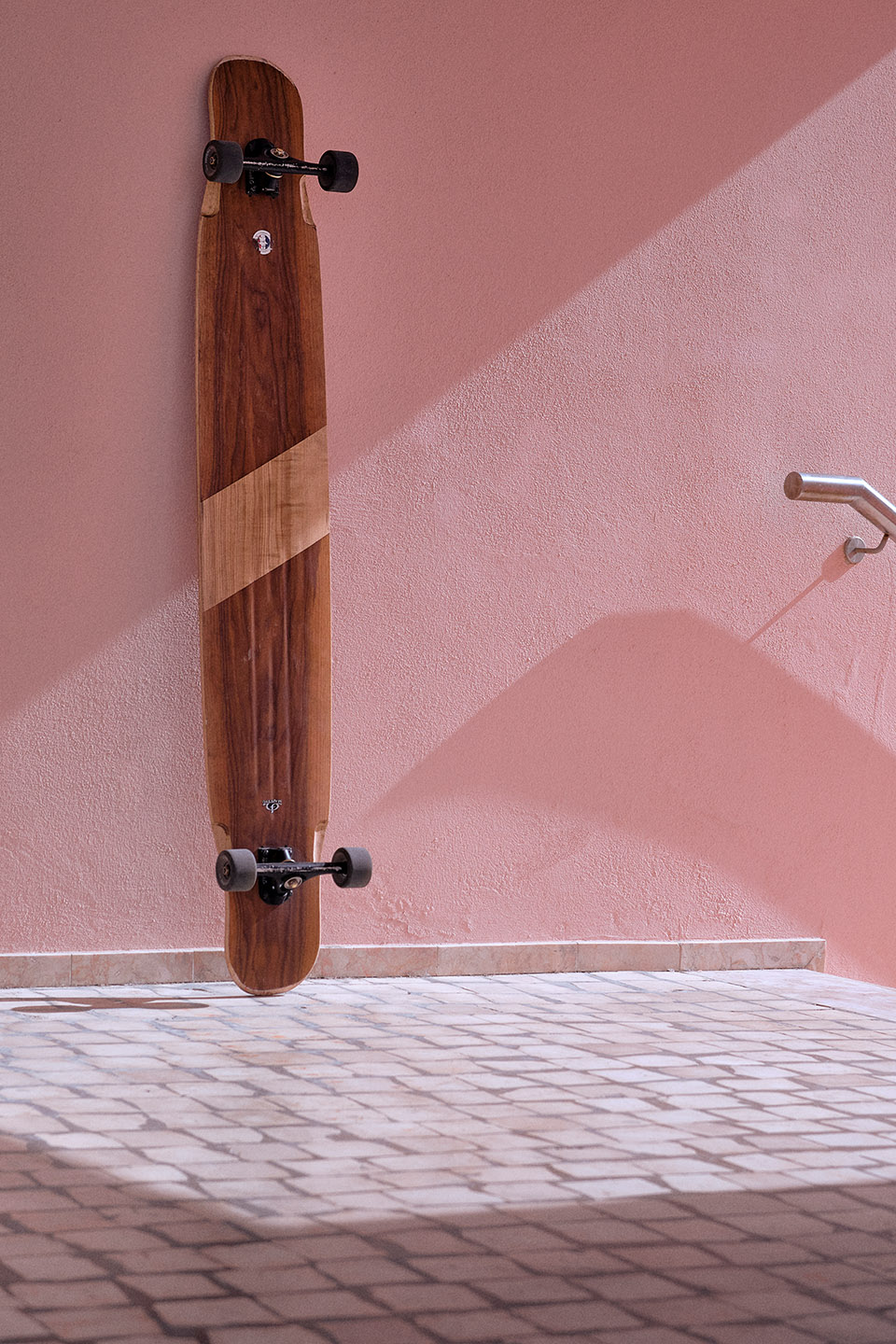
ZOOT: Right now, what are your goals for the future?
Giu: My goal for the future… working on the Longboard Dancing Fusion Lab! Building this community, finding, and then really connecting more people with each other because we are such a small community and there are a lot of people out there, but they don’t know each other… either that or they don’t know that there are other people who do this longboard dancing fusion! That’s a big goal, for sure.
Then, another thing is that I want to get more into the art context. I’m very interested in following this path and going deeper into creating performance/performing more often, whether at festivals or certain instances, bases, etc. Hopefully, I also would like to do art videos (like short movies) and in general, with this idea of using longboard dancing as a tool of storytelling and artistic expression and… I think that’s it! Community building, working on this art field and diving deeper into the art space, galleries, festivals and so on.
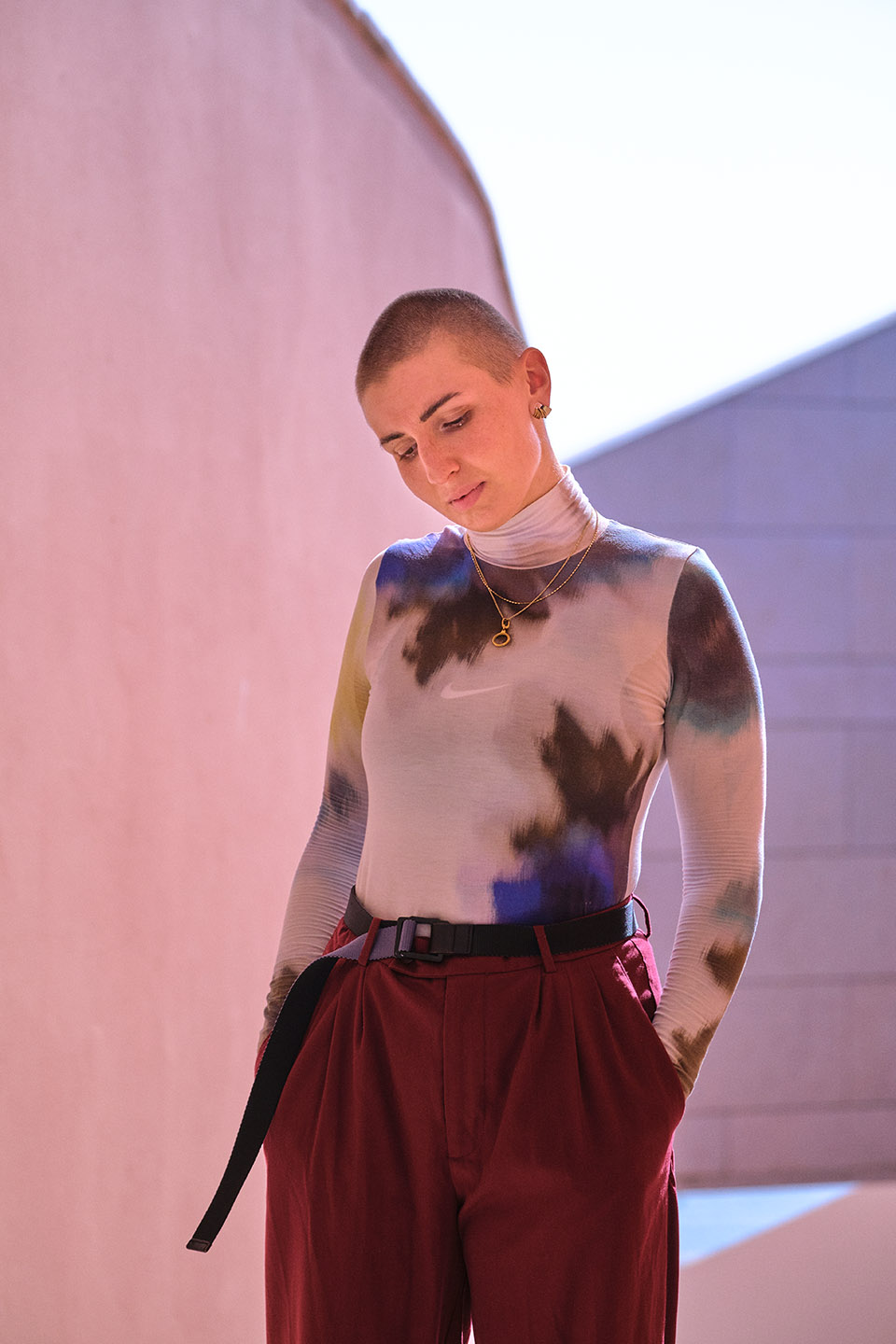
ZOOT: Longboard dancing is such a beautiful sport… not only because of the dancing, but also because of the hard work it implies. To see the transformative process of it and seeing the change from sport into art and storytelling like you’ve said, is nice. Right now: What do you think it means to you, in this context of creativity and art, to use dancing as a form of self-expression?
Giu: A big part during the creating phase, I realized that it’s therapeutic work. There’s a lot of personal things that went into this piece that we created together with a choreographer, and it’s been very interesting to see how we started from experimental movement-based research and afterwards it became so much more meaningful. I didn’t expect it to be! I think it came from all your lives experiences.
They’re present in your body and dancing is this kind of activation of whatever we experience, this is why so many dances were created from the lift experience of a lot of marginalized people as well and personal experience. It’s a lot of this expression of who I am, how do I feel and there are many personal messages that come into the way of moving. I think that, in my case, there’s a lot of fluidity happening and that’s related to my nonbinary identity, how I explore dance, why I also use visuals of this whole gradient colour, schemes that I use also express this fluidity.
There’s a part of my own personal expression of who I am and putting this together in movement. Then, there’s also this part of having the freedom of, for instance, creating this piece. It gave me time that I usually don’t have to work… usually I am creating content for social media, doing commercials… it’s a lot of effort. Everything that you create in this more commercial world must function within seconds so being able to explore things over a period of time gives me so much freedom and it’s a tool to being in this art context that gives me so much more freedom to explore and experiment.
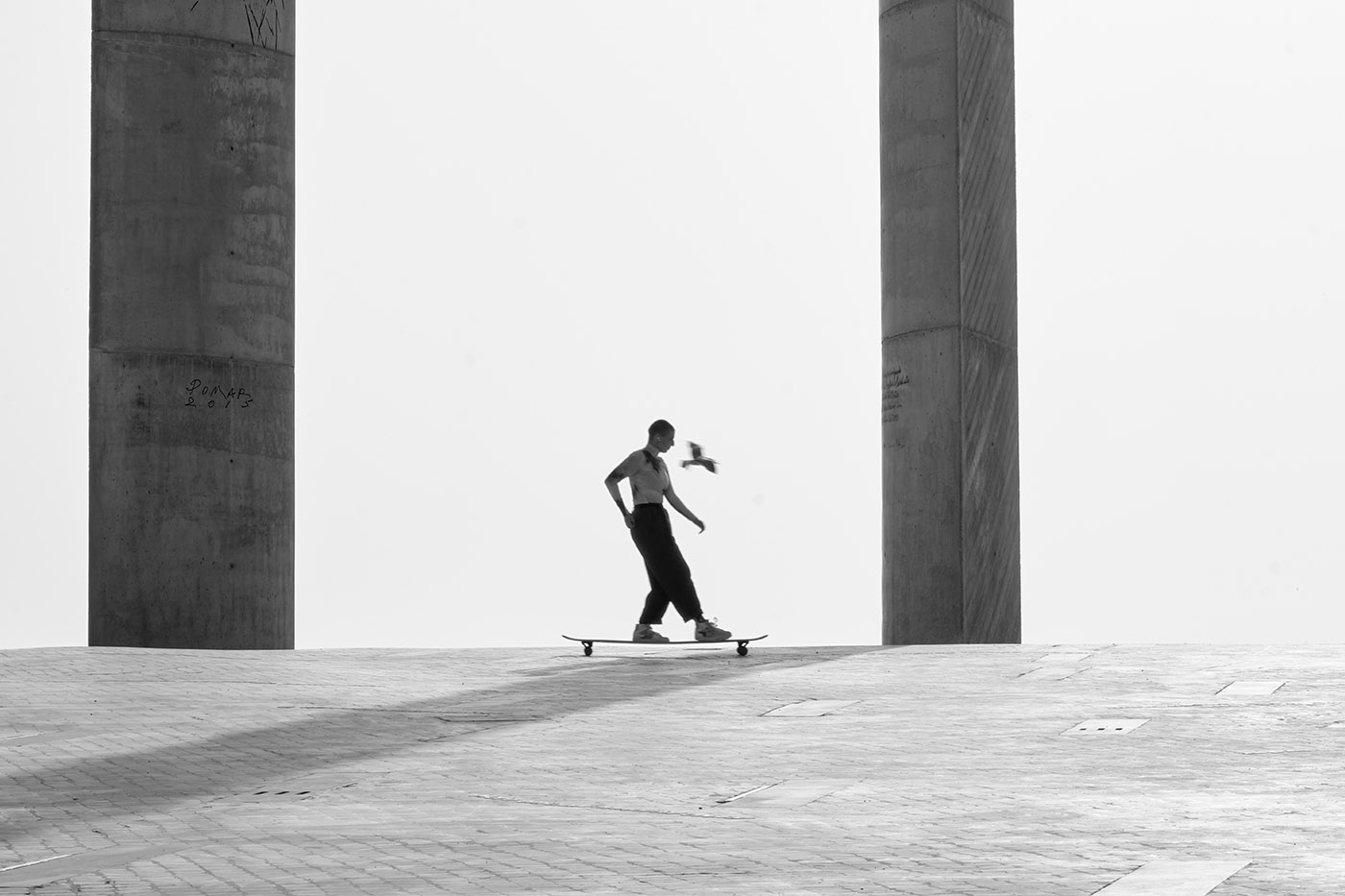
ZOOT: I’ve seen on your Instagram that you support meaningful causes such as the rights for feminism and diversity which is something really important and honourable. Do you think that the pain of fighting for equal rights, diversity, against war…do you think all these factors have an implication on how you express yourself?
Giu: That’s an interesting question… I think that now it’s not explicitly impacting it but, for sure, there’s an implication in my work.
There are so many facets to my work. Whether it’s the expression, the dance itself, the community work and working with people, teaching, etc., there are so many aspects that I’m always working on!
With this, there’s always this idea of inclusivity and always coming with an interceptional mindset and mind. I find it that the more knowledge you have about feminism, being antisocial, justice, the harder you are on yourself, and I was actually surprised to hear that my social media expresses that I am doing (that this is a value of mine) to create social justice and creating awareness for social injustices…
I feel like the more I got into politics, the quieter I became cause I’m so careful! It’s impossible to be a perfect activist or perfect ally and so on, as a human being… we are flawed beings, and we do mistakes even. Everything is so connected and contextualized so the one thing that is right in this one context can be the worst thing in the other context… there is no true truth and no wrong. It’s a lot of greyscales!
I find it very hard that you never do perfect or right. It’s also supposed to mean so that’s one big aspect for sure… but then, a big part of it is me being a trans / nonbinary person that in a way I communicate with careful words, the way I plan meetups so a big part of it is having this idea of safe spaces in mind and how to create safest spaces and making it as inclusive as possible even though I know there’ll always be exclusions. As I mentioned earlier, this aspect of fluidity that comes from my identity is an expression of what nonbinary-ness means and it can be fluid, a spectrum or black and white binary ideas that exist and I think this applies to so many things in the world that it’s not as simple as it has been in the past when you could have made these ideas simpler, choosing one right and one wrong and now you have the greyscale. All this… it’s always a thought to integrate.
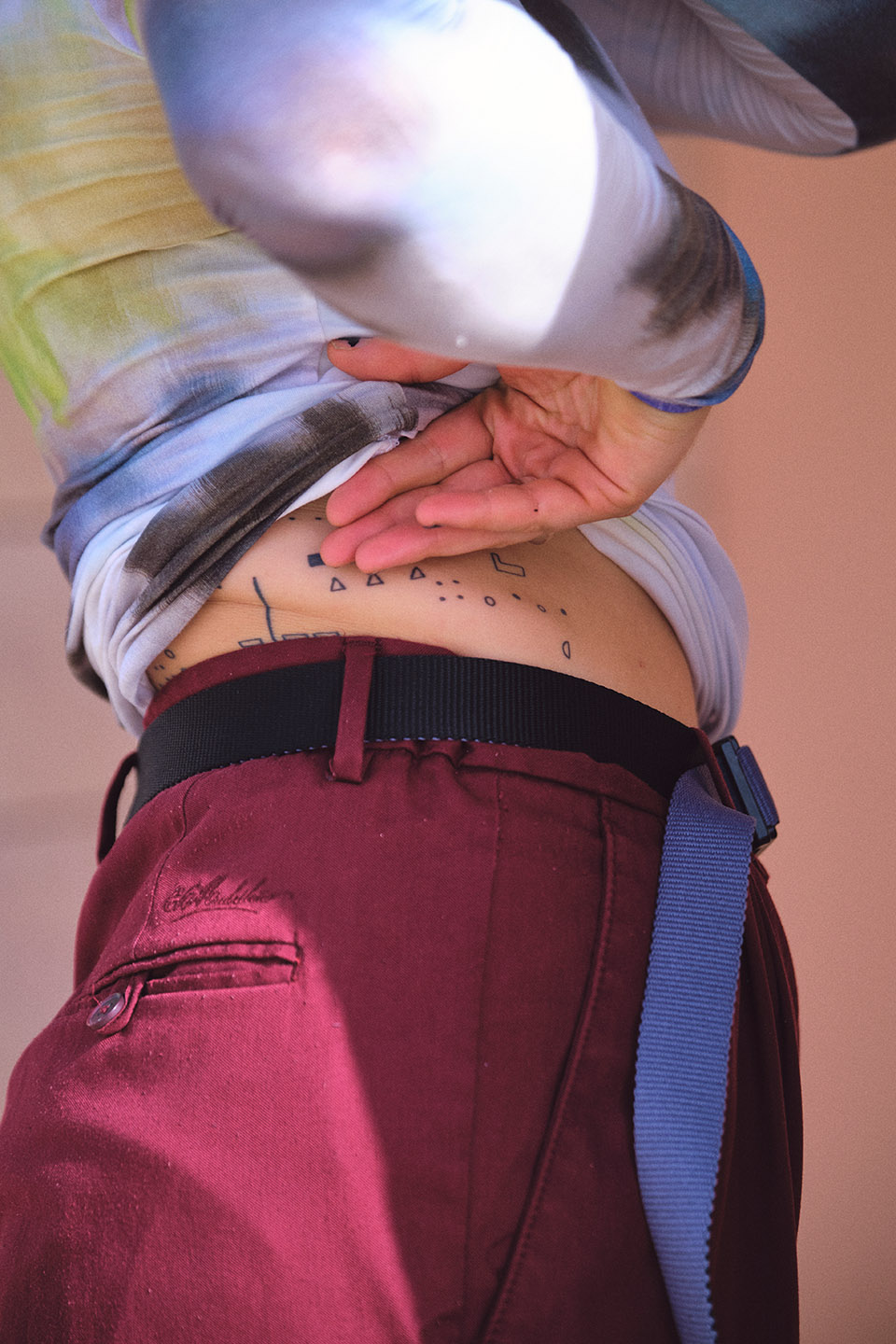
ZOOT: How has longboard impacted your life and who you are? Do you have any moments that felt like accomplishment or rewards, maybe?
Giu: It has turned my life upside down. It wasn’t from one day to the other upside down, it has been very gradual, but it had instantly an impact. I started skating on the first year after I finished high school, when I took a gap year. I did mini jobs and other than that I was skating everyday which was the best experience to have! I met a lot of people and learnt so much… I gained a different perspective of life and characters and people, and it’s been super personality-shaping over the years.
I started to travel more and more and finding job opportunities, now it’s my full-time work. I met incredible artists because of this, and it’s been a lot of travelling, meeting amazing people, learning about myself, keeping on progressing and now, with 10 years of skating, I have this perspective of where I started, and you learn as you go. I think I have two accomplishments in my mind when you asked me this question and I think the first one, a big one, is when I did a commercial for Facebook!
That commercial was happening in the year when skateboarding became Olympic and Facebook was looking for other ways to show skateboarding in different facets and one of the advertisements that they produced was one about longboard dancing, so it was amazing to be chosen for this clip that was so amazing and great representation of our community! They did a great job. Did a lot of research, found a lot of the right longboard dancers to have this representation. I’ve met insane artists at this project, two choreographers that I adored and then I met them in person… I was even more passionate about them and their work. They saw me dancing to Radiohead and they thought “we want this feeling”; something more back to the roots, back to contemporary. The other milestone is this performance that I mentioned before… it felt like a “truly, yes, I’m finally an artist. I created a piece! It’s a cohesive work that I created there.” And being able to perform this in front of people multiple times felt like a huge mile step and both of these milestones, I feel like they represent a beginning of a journey and from there, a lot of amazing things will grow and continue to be an inspiration for my work.
ZOOT: Thank you very much Giu!
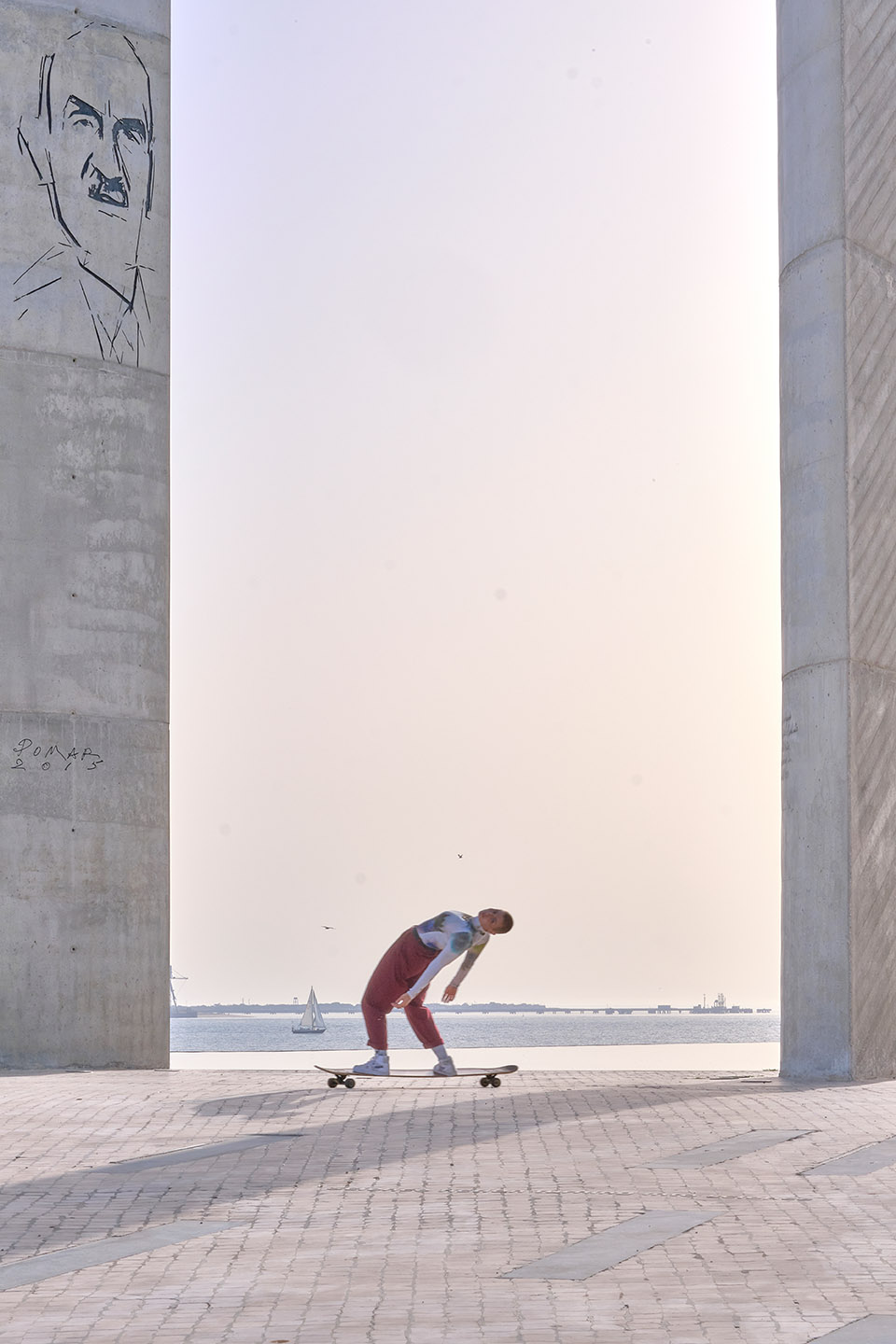
To boot…
Learn more about Longboard Dancing Fusion Lab here.
So see Giu dancing and performing her incredible art go to her YouTube channel here.
See more of Giu Alfeo’s work here.
GIU ALFEO

